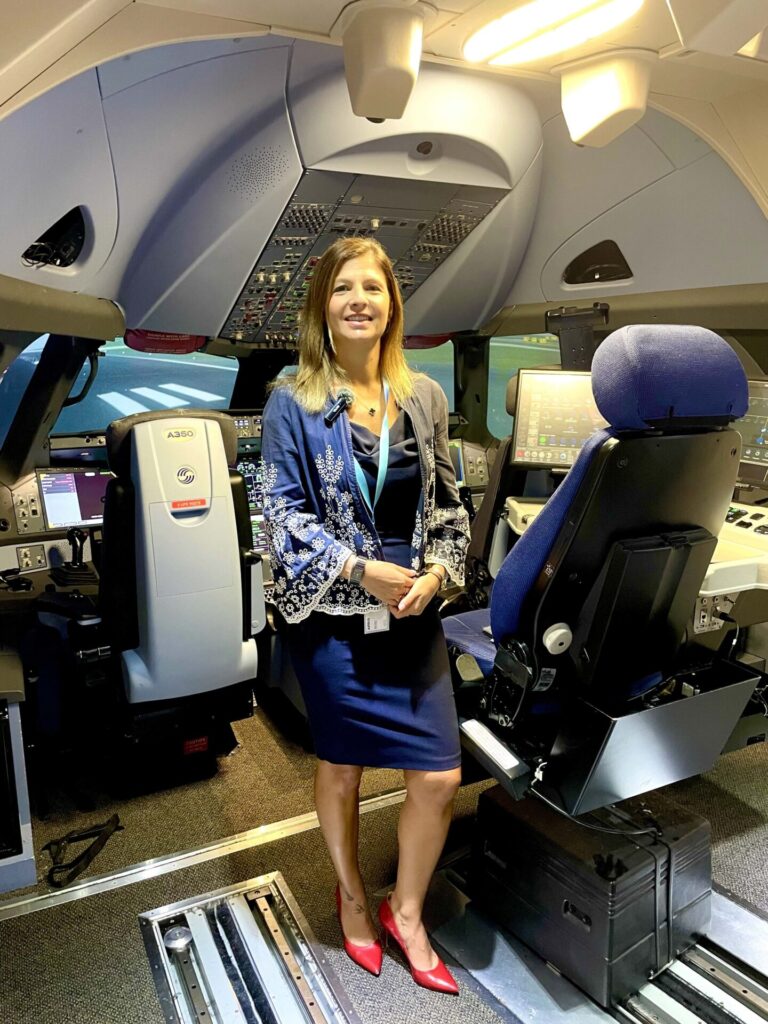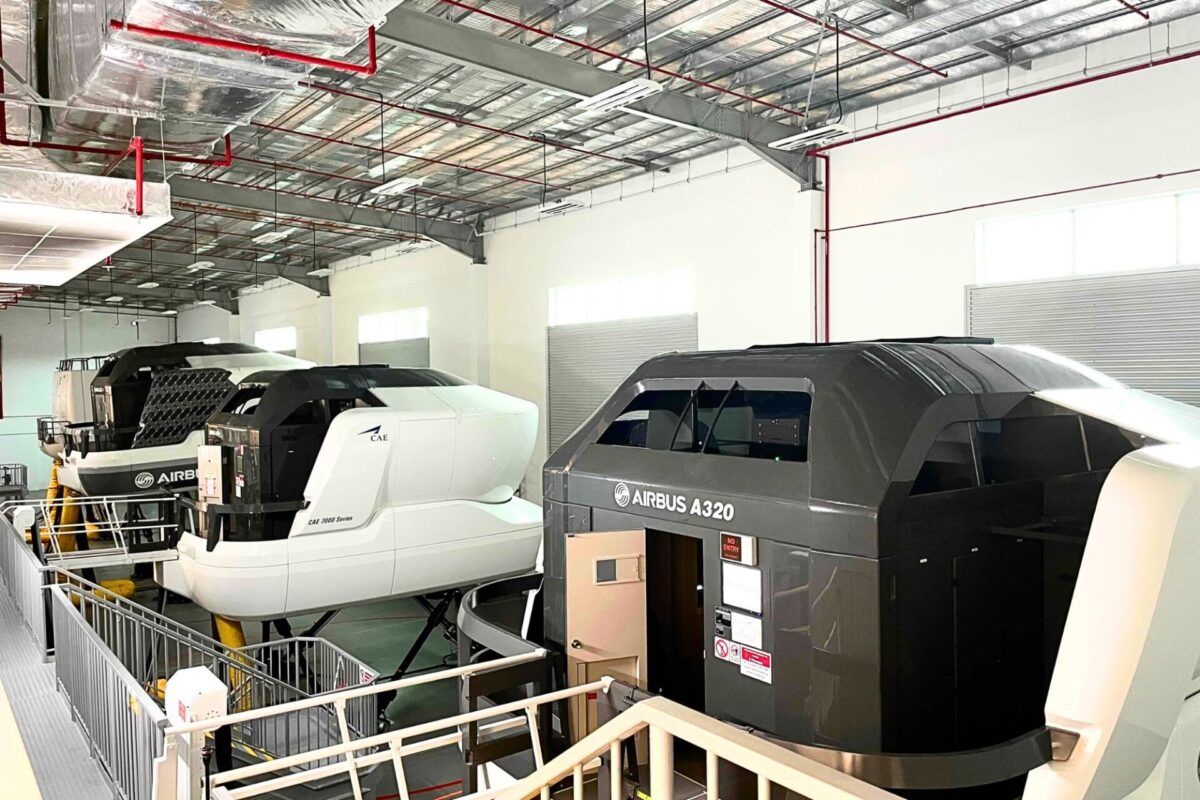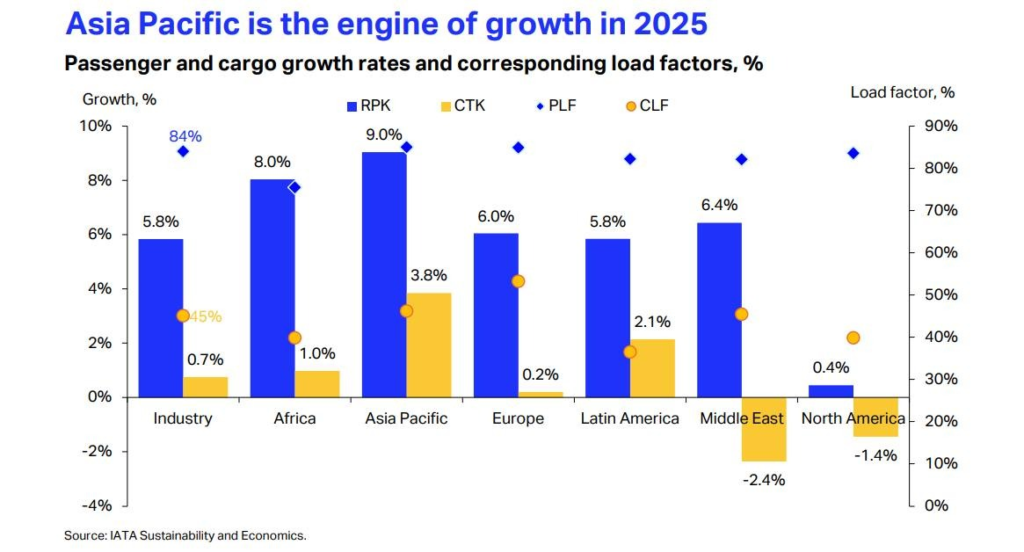At present, growth in the global aviation industry is being spearheaded by the Asia Pacific (APAC) region.
According to a June 2025 report by the International Air Transport Association (IATA), APAC is experiencing the fastest air travel expansion of 2025, its 9% year-over-year growth accounting for 52% of the industry’s overall growth. IATA attributes this surge partly to the resurgence of international travel.

Image: IATA
The region’s surge in growth is supported by Airbus’ latest Global Services Forecast (GSF) for 2025-2043.
The European aircraft manufacturer anticipates a need for 999,000 new skilled professionals in the APAC region (nearly 45% of global manpower) over the next 20 years. Within this figure, there is a demand for 268,000 new pilots in the APAC region, including China and India.
AeroTime recently visited the Airbus Asia Training Centre (AATC) at Seletar Aerospace Park in Singapore, gaining exclusive insight into one of the aviation industry’s most advanced pilot training facilities.
Established in 2015 as a joint venture with Singapore Airlines, the 9,200-square-meter facility houses nine Full Flight Simulators (FFS), representing the A320, A330, A350, A380, and ATR 72-600 aircraft types. AATC operates the world’s largest fleet of A350 simulators and ranks as the most extensive Airbus training center in the world.

Leading this advanced training operations is Silvia Meloni, General Manager of AATC and a seasoned aviation professional, who began her career as an A400M Maintenance System Integration Manager before relocating to Singapore over a decade ago.
Meloni told AeroTime: “At AATC, we serve all carriers, from legacy airlines to low-cost carriers, which are growing very rapidly. We are positioned at the heart of Asia, where airlines are exceptionally dynamic.”
Meeting Asia Pacific’s soaring demand
Meloni emphasized that Airbus recognizes the robust demand for widebody aircraft in the Asia Pacific region, which is projected to account for 45% of global aircraft demand during the coming years.
“We’re looking at the Asia Pacific fleet growing to 20,000 aircraft over the next two decades, translating to significant training demand with annual growth of 5% in the region,” she explained.
This fleet expansion is driving an unprecedented need for qualified pilots. “We’re talking about 268,000 pilots required over the next two decades,” Meloni said. “That’s precisely why AATC is here. Carriers are expanding, and there’s a critical need to provide type rating, recurrent training, and operational training.”
With capacity to train up to 10,000 students annually, AATC currently serves 93 customers, the largest client portfolio within the entire Airbus training network.
The AATC path to the cockpit
When asked about the timeline for becoming a commercial pilot, Meloni outlined a roughly two-year journey.
“Theoretically, you begin by flying small turboprop aircraft, then progress toward obtaining what we call an Airline Transport Pilot License,” she explained. Once trainees arrive at AATC, they embark on type rating certification, which typically requires around two months to complete.
“So all in all, within approximately two years, you can earn your license and fly as a commercial pilot with an airline.”
Advanced simulation technology

AATC’s nine Full Flight Simulators feature advanced 3D screen systems that create remarkably accurate outdoor environments, providing pilots with realistic training scenarios.
“Our primary goal is building pilot confidence by reproducing reality as faithfully as possible. We replicate terrain features including mountains and valleys, simulate various turbulence conditions, and utilize motion platforms that can reproduce even the most extreme turbulence scenarios,” Meloni explained.
She highlighted one particularly impressive capability of the A350 simulator: autonomous recovery training.
“For instance, in the event of cabin pressure loss,a situation where pilots could face significant challenges managing the aircraft – the A350 can autonomously assume control, execute a safe descent to an appropriate altitude, and handle communications.”
This advanced feature is fully integrated into AATC’s simulators, and according to Meloni, customers greatly value this training opportunity as it’s rarely available at other facilities worldwide.
Airbus’s strong position
Meloni expressed confidence in Airbus’s competitive position with next-generation aircraft such as the A350 and A330neo, as well as the manufacturer’s ability to meet its ambitious delivery targets.
“Just this year, Airbus has delivered 424 aircraft, and we’re on track to achieve our target of 820 deliveries by year-end 2025 – a notable improvement from 2024’s 766 aircraft delivered,” she concluded.


